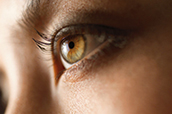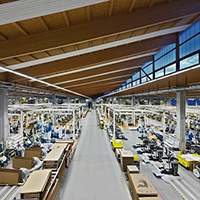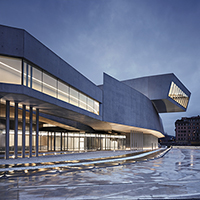Visual |
Emotional |
Biological |
||||
| Human interface | Receptors in the eye | Parts of the brain that process visual stimuli | Hormonal secretion, body functions | |||
| Function | Optimal assimilation of information | Wellbeing, attention, identity, changing moods | Activity, activation, recreation, stabilisation of the internal clock |
|
|
Intensity"The sun rolling high through the sapphire sky, keeps great and small on the endless round. It's the circle of life." (Elton John) |
|
|
|
DirectionThe course of the sun in a day or a season has influenced the precise location of human settlements since the beginning of time. The sun helps create dynamic silhouettes so that shadow-free hours with a cloudy sky seem rather dull in comparison. |
|
 |
ColourSunrise or sunset, a rainbow, the subtle interplay of light and water, the light reflected by a rich autumn forest or a vivid snow scene – nature’s light adds a colourful, emotional quality to our lives. |
|
 |
TimeOriginally, phases of activity and recreation were defined by the natural course of light. It wasn’t until the development of more advanced sources of artificial light that humans began to shift nature’s dimensions of time, resulting in both positive and negative consequences. |
 |
Offices and Communication
Creating Light Creates InspirationWellbeing in office spaces is enhanced by holistic lighting ecosystems. Active Light is linked to daylight dynamics, actively supporting the natural bio rhythm and seamlessly ensuring maximum visual comfort for tasks. Such human centric lighting solutions bring people together and promote creativity, as they are effortlessly personalized, with the individual always at heart.» Read more on Active Light for Offices and Communication |
Industry and Engineering
Creating Light Creates PrecisionActive Light in industry is as unique and dynamic as the employees, the processes and the layout of different production halls. Human Centric Lighting puts the focus of the lighting design firmly on the individual. Visual, emotional and biological needs are fully supported by a blend of Active Light and additional workplace-oriented lighting for work during the day and the night. This approach also facilitates accurate working and improved quality. Pioneering lighting solutions with Activity-Based-Lighting use innovative sensor technology to automatically adapt to the specific situation.» Read more on Active Light for Industry and Engineering |
 |
 |
Presentation and Retail
Creating Light Creates EmotionsIt is human instinct to be unconsciously drawn to moving objects. That is why our LIMBIC ® research has focused on the human senses and how these are affected by Active Light. The aim is to create a world of experiences linked to various types of personalities that activate our senses and guide our perception, drawing people to what stimulates them and crafting a lighting environment for every kind of individual.» Read more on Active Light for Presentation and Retail |
Art and Culture
Creating Light Creates ImaginationA flexible lighting system is sensitive to context, adapting to suit different architectural situations and offering exactly the right light to maximize the appreciation of every artwork.In museums, Active Light focuses on visual comfort and preserving sensitive materials while simultaneously taking all conservational and visual aspects in to account. This creates a unique experience, emphasizing the appreciation of art and architecture, as well as the importance of a precise and dynamic lighting system. » Read more on Active Light for Art and Culture |
 |
 |
Outdoor and Architecture
Creating Light Creates InteractionDynamic light can be aligned with the behaviour of people during the night. Providing a lighting scheme that incorporates several layers of light requires a flexible system that satisfies the needs of both people and the environment during different periods of the night. Light can activate urban areas by generating curiosity and inspiring people to experiencing particular places. Active Light enables designers to turn spaces into places, creating a specific social identity and a true sense of belonging. The nocturnal ecosystem is preserved if the lighting system intelligently balances visual, biological and emotional factors. Thinking about the specific users of a place helps us to plan and execute lighting on a human scale.» Read more on Active Light for Outdoor and Architecture |